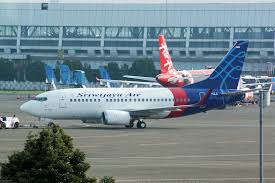A presentation by the Executive Chairman of the CAPA Centre for Aviation, Peter Harbison, called “Midnight’s Approaching: Who’s Going to Turn into a Pumpkin?” is a story of hope and delusion and some more hope.
- Despite a massive slump due to COVID, airlines have had some positive strong tailwinds, but will the sector actually see the light at the end of the tunnel?
- Business travel is going to remain heavily subdued and is undermining the full-service airline model.
- While government generic economic aid has paid wages, more help is needed from the governments.
Read – or sit back and listen to – this interesting talk on the future of aviation post COVID-19. Peter Harbison, CAPA Centre for Aviation Executive Chairman, shares his expert points of view. He begins:
I hope that during this you’ll start to appreciate what I’m talking about here – half a dozen key points. The first one is that reality starts to bite in the second quarter of this year as government supports dry up, as the cash needs to start coming in. In fact, we’re approaching the new tipping point. The next one is, are we actually seeing the light at the end of the tunnel? Then a little bit about business travel, how it undermines the full service airline model by the loss of a great part of it. Then where are the governments when you need them? Good question. A little bit about jab wars, the vaccination process. Then I want to finish with some future industry directions as I see them, some fairly big picture ones.
So, until now, airlines have enjoyed some very strong tailwinds that have helped them remain liquid over the past year, despite a massive, massive slump in the market. But of course, in the process, their debt profiles have deteriorated quite substantially. Government generic economic aid has paid wages. Many countries have given loans and/or acquired equity in their airlines, fortunately, in terms of tailwinds. Fortunately, the stock markets remained strong. So, raising equity has also been possible. Asset values have remained high, so the debt raising has been possible.
Quite frequently, well-funded lessors have been relatively generous in helping airlines stay afloat. And, of course, interest rates are uniquely low and look like staying like that for a long time. As a result, remarkably fewer airlines collapsed. There is a list of them, but what’s surprising about the year was not how many collapsed, but how many didn’t collapse. It was just a remarkably dreadful year. International capacity was down to about a 10th of its previous levels and lots of domestic operations didn’t really fare much better from February, March 2020 right through the rest of the year. But at the same time, some new airlines actually entered the market.
So now we’re almost halfway through the first quarter of this new year and the situation still remains dire. What’s going to happen next? Government generic economic supports are going to continue until probably the second quarter, maybe more in the US depending on what happens in Congress. Airline income, meanwhile, is likely to remain static, and cash burn, at quite frightening rates, is continuing. Vaccine rollout is gradually improving consumer sentiment and helping to reduce death levels and new cases, hopefully. But cash flow is now critical. We’re approaching the tipping point. Cash burn cannot continue indefinitely. So, airlines are going to have to start becoming proactive rather than just burning the furniture to keep themselves warm. In that process, hope is not going to be an adequate strategy. It’s nearly midnight.
So how different are things going to be in the second quarter? First of all, as government aid taps are turned off, which markets will do best? Vaccinations tend to improve the consumer and general outlook, particularly in the US, the UK and in Israel, obviously, which has been very fast to move, and probably China, but importantly, not globally. Business travel is going to remain heavily subdued. International capacity still remains below 10% of pre-pandemic levels, and many borders effectively are closed still. But domestic US and domestic China should show some pretty good signs of improvement.
Let’s look at Europe first. With only a few weeks to go for bookings to recover for the second quarter, which is a key period for European airlines, government border responses are still fragmented and uncoordinated, vaccination progress is slow and uneven, and I’ll talk a bit more about that later. Passengers are booking late and are reluctant to fly internationally now when they risk snap quarantines or cancellations of flights. Eurocontrol, which covers the wider Europe, suggests that activity will remain low right through the first quarter and only start to rise gently in April and May of this year.
Meanwhile, Europe’s airline seat capacity continues to underperform the rest of the world. The Middle East is down 56%. Africa is down 50%. North America is down 48%, Asia Pacific 45% and Latin America 42%. Europe’s seat capacity is down 74%. Even Europe’s LCCs, who generally across the world been performing better, are starting to do it tough. Their revenue decline actually accelerated in the last quarter of 2020, easyJet’s most heavily because for various reasons they have not expanded their capacity. But that overall decline for the LCCs I think is very important, Wizz and Ryanair particularly. Europe’s airlines need first quarter cash badly. Will it arrive in time? Probably not. The UK vaccine rollout is looking pretty good, but the timing is too short either to generate public confidence or to give governments the willingness to open up their borders. So, selling into the markets before Easter in Europe is going to be very complex. There’s a very optimistic graph here from The New York Times which suggests that vaccines could quite blunt the UK epidemic in weeks, looking at everyone being covered by the end of June, which is an optimistic approach, and maybe we really don’t know in these circumstances what it will be. On the other hand, the Financial Times last week suggested that health authorities say that there are three different variants of the virus circulating in England with a mutation that’s believed to undermine the immune protection provided by the prior infection and by the current vaccines. So, that’s not good news.
In the UK, IHME, which has been very accurate in its projections over the last 12 months or so, projects, again, rising and accelerating deaths in the UK up to about possibly 170,000 by the end of May, which obviously has an effect across the board in terms of government and consumer sentiment. Spain, which is relying very heavily on a regrowth of tourism, is projected actually to steepen in February, March right through to April in terms of deaths. Not a nice sign. In France, the trajectory also is trending upwards. So, these are all signs that make it difficult to see how Europe can make a rapid recovery.
I mentioned before that US domestic aviation should come back first, and it’s interesting for a number of reasons. First of all, there’s a very stark contrast between the attitude of the US and most other developed nations to the whole process and that’s for various reasons. It’s a unique country in many ways. The ability though, to tolerate nearly 4,000 deaths a day is really something that most governments are not prepared to do. Contrast that with China, where the initial outbreak was really extreme, and they’ve since recovered and got things mostly under control. Their travel restrictions really clamp down whenever there’s a new outbreak, and I’ll talk a little bit more about that in a moment. As a result of that process and of the original attitude and actions taken to slow the growth, China’s domestic travel is about the same level as it was pre-COVID. Whereas the US remains about 50%. But both countries are projecting rapid recovery as the vaccines roll out.
Now, these pictures actually are probably worth a thousand stories. First of all, it’s interesting that both markets are now about comparable size. These graphs are showing in red the trajectory of capacity in 2020, and you can see China there slumped very rapidly at the end of February as the capacity was cut back and the market closures just occurred. The US, by contrast, was well through March before things were closed down there. The red line at the top, which shows a much slower response and in a lot of ways, it has been suggested, has changed the entire approach of the US.
The dotted green line and the solid green line, the solid green line shows where we are in 2021. China’s back to about the 2019 level. But interestingly, this is a key time of year. The Chinese New Year, the Lunar New Year is a major travel time, and there’ve been significant restrictions on travel in order to dampen any further outbreaks. But the dotted lines, ignore the downturn on the Chinese one after the middle of March to the end of March because that’s just a schedule filing issue. But as you can see, both the US and China are looking fairly optimistic beyond the end of this month. The US trending up to 15 million passengers, 15 million seats rather, by the end of March and China up to probably maybe a couple of million more.




